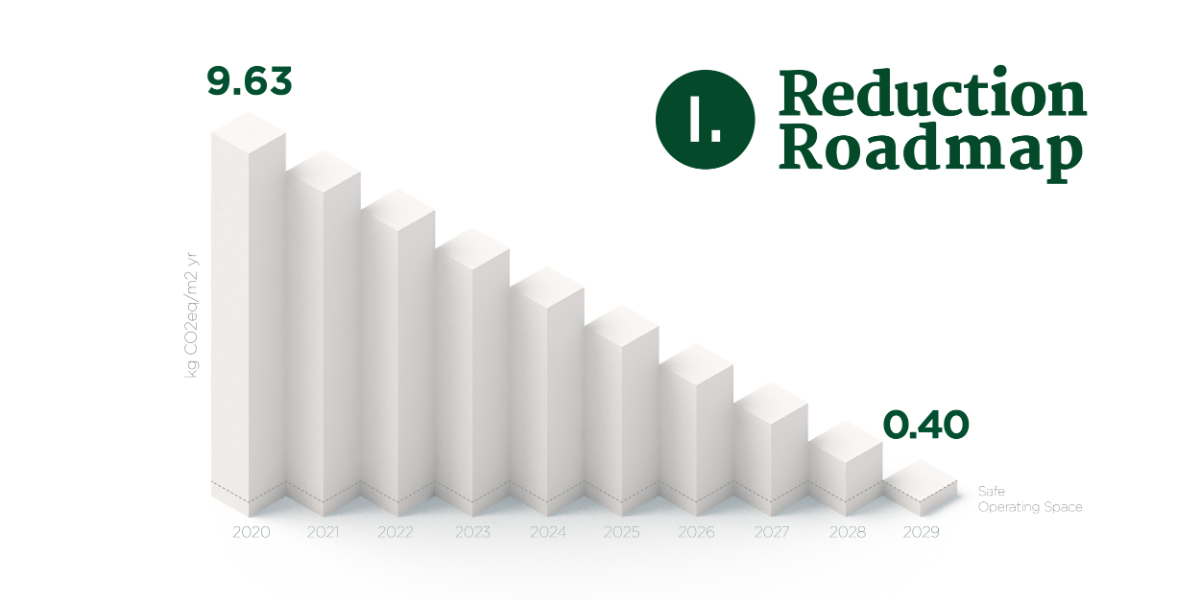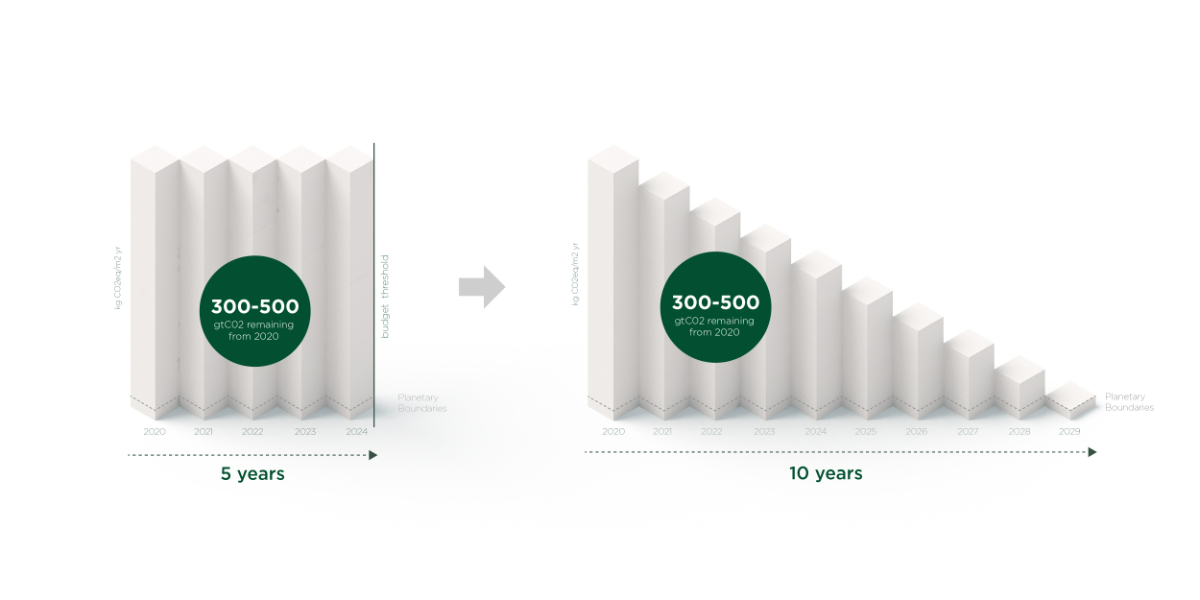AÑO
2023
CATEGORÍA
Trabajo
OBJETIVOS
Industria, innovación e infraestructura, Ciudades y comunidades sostenibles, Producción y consumo responsables, Alianzas para lograr los objetivos, Navegar por la sociedad post factual
PAL. CLAVE
Building Industry, Roadmap, carbon reduction, Planetary Boundaries, Paris Agreement
PAÍS
Denmark
CRÉDITOS
EFFEKT, MOE, CEBRA
LINK
https://www.reductionroadmap.dk
Reduction Roadmap
Translation of the Paris Agreement goals into reduction targets for new Danish housing projects.
How does it work?
The Reduction Roadmap is an Earth-shot project which – for the first time ever - works to translate the Paris Agreement and the Planetary Boundary for Climate Change into industry-specific reduction targets for new Danish housing projects. The Reduction Roadmap scales global greenhouse gas emission target levels, down to national, to industry-specific, to Danish housing - and finally to a target level. The Reduction Roadmap identifies where we are today, where we need to go, and the speed at which we must reduce our carbon emissions to reach Earth’s safe operating space. The result is a science-based transformation tool and a call to action for the Danish building sector, working to align building industry actors with commitment to the Paris Agreement. The roadmap is open-sourced and can be implemented as a sustainability target by any building industry actor who aims to operate within commitment to the Paris Agreement and planetary limits.
Why is it needed?
The Reduction Roadmap targets are based on findings from The Safe operating space for greenhouse gas emissions by Petersen, S. et al., (2022). The findings tell us that globally we must reduce our emissions by 96% to reach the safe operating space, defined by the Planetary Boundaries. According to the IPCC AR6 (2021) report, we must do so within the next 7-14 years to stay within the Paris Agreement 1,5°C scenario for global warming. If we continue emitting as we do today, we will use up the remaining carbon budget in the next 5 years, if we begin reducing right now, we can extend the reduction timeline until between 2029 – 2036. Whilst the targets are global, the allocation method can be tailored for any industry or nation by replacing the pertinent data with new number sets. As such, the Reduction Roadmap should be seen as a tool and prescriptive method for anyone to scale emission levels in accordance with the Paris Agreement and Planetary Boundaries here in Denmark, and abroad.
How does it improve life?
The Reduction Roadmap serves as a translation of scientific findings into legible and simplified conclusions for the Danish building industry. Visually, the Roadmap bridges abstract concepts like the Planetary Boundaries framework, based on Earth Science systems, with industry specific story-telling and operational Building Life Cycle Assessment metrics. The Reduction Roadmaps takes hard data out of excel spreadsheets and scientific graphics and represents those findings as content legible to actors across the building industry value chain. Through storytelling, the Reduction Roadmap makes clear, a rather complex and big idea. For the first time, we have determined a specific reduction target for the building industry, which allows actors to make good on their commitment to the Paris Agreement. As such, the roadmap serves as both a sustainability target based on planetary limits and call to collaborative action.





